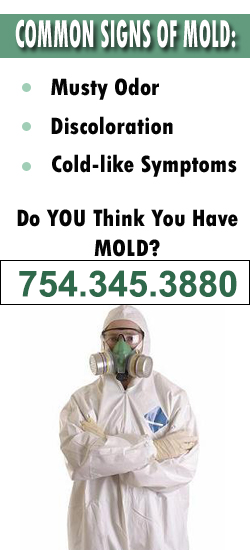Did you know an estimated 70% of homes have some form of mold?
We’re all familiar with the unsightly appearance and unpleasant smell of mold, but many of us might not be aware of the variety of natural solutions that have been suggested for preventing mold growth.
From vinegar to essential oils, these remedies are touted as effective, environment-friendly alternatives to chemical mold killers.
But do they really work?
We’ll be taking a closer look, comparing these natural solutions with traditional methods to determine their true effectiveness.
You might be surprised at what we discover.
Understanding Mold and Its Dangers
Let’s dive into understanding what mold really is and why it poses a significant risk to our health and homes.
Mold is a type of fungus that thrives in damp and humid conditions. It’s everywhere around us, in the air and on many surfaces. Mold starts growing indoors when its spores land on wet surfaces. There’s no escaping it completely, but we must control it to prevent its harmful effects.
Now, why is mold a concern? For starters, it’s bad for our health. Exposure to mold can lead to various health issues, particularly respiratory problems. It can trigger allergies, cause asthma attacks, and in severe cases, lead to lung infections. We may also experience symptoms like sneezing, coughing, and skin rashes. For those with compromised immune systems, the effects can be more severe.
It’s not just our health at risk; our homes are in danger too. Mold can damage the structures of our houses, particularly those made of wood. It feeds on organic material in wood, gradually weakening the structure and causing it to rot. If left untreated, this could lead to significant and costly damage.
Popular Natural Mold Prevention Methods
While it’s crucial to understand the risks associated with mold, it’s equally important to know how to prevent it using popular natural methods. There are several effective, eco-friendly ways to keep this unwelcome guest out of our living spaces. Let’s delve into some of the most popular ones.
Tea tree oil is a potent fungicide that can kill mold spores and prevent them from returning. Just mix two teaspoons of tea tree oil with two cups of water, spray the solution on moldy surfaces, and don’t rinse it off. The strong smell will dissipate in a few days, and you’re left with a mold-free environment.
Vinegar, a household staple, also works wonders in mold prevention. Spray undiluted white vinegar on the affected areas, let it sit for an hour, then wipe clean. It has a mild acidic property that can prevent mold growth.
Baking soda, another common household item, can also be used. Mix a quarter tablespoon with water in a spray bottle, spray it on the mold, scrub away the mold, rinse, and then spray again and let it dry. This creates a protective layer against new spores.
Another natural method is using grapefruit seed extract. Mix 20 drops with two cups of water, spray on mold, and don’t rinse. The citrus scent is a bonus!
Lastly, prevention is key. Keep your home well-ventilated, control humidity, and fix any leaks promptly. These simple steps can make a huge difference in preventing mold growth.
Using these natural methods, we can effectively combat and prevent mold, keeping our homes safe and healthy.
Evaluating Each Natural Solution’s Effectiveness
Now that we’ve explored these natural mold prevention methods, it’s crucial to evaluate how effective each solution is in combatting and preventing mold growth. Let’s take a closer look at each one.
Vinegar, for instance, has been hailed as a natural miracle worker in the battle against mold. It’s cheap, readily available, and is reported to kill about 82% of mold species. However, while it’s effective at removing visible mold, it doesn’t always eliminate mold spores in the air. Plus, its strong smell can be off-putting to some people.
Tea tree oil, on the other hand, is a potent mold inhibitor. It annihilates mold and prevents future growth, including airborne spores. But it’s important to note that while tea tree oil is highly effective, it’s also more expensive than other natural options and can be toxic if swallowed.
Baking soda, a staple in most households, is another great natural mold deterrent. It’s safe, non-toxic, and not only cleans up mold but also deodorizes the area. However, it’s more of a preventative measure and may not be as effective against established mold infestations.
Then we’ve grapefruit seed extract, a less known but powerful mold combatant. It’s odorless, which may appeal to those put off by the smell of vinegar or tea tree oil. It kills mold at the root level and prevents regrowth but it’s not as readily available and can be quite pricey.
Comparing Natural and Conventional Methods
In our quest to keep our homes free from mold, it’s essential to weigh the pros and cons of both natural and conventional methods. Natural approaches often employ household items like vinegar, baking soda, or essential oils. They’re safe, non-toxic, and eco-friendly, making them ideal for homes with kids, pets, or individuals with allergies. However, their effectiveness isn’t always guaranteed and may require frequent applications.
On the other hand, conventional methods use commercial mold-killing products. These are specifically designed to kill mold, making them more potent and effective. They often ensure quicker results, and less frequent applications are necessary. It’s important to note, though, that these products often contain harsh chemicals. This could pose risks to our health and the environment.
So, how do we choose between the two? It’s all about finding a balance that suits our specific needs and circumstances. If the mold problem is small and just starting, natural methods could be enough. They’re cost-effective and safe, making them an excellent first line of defense.
However, if the mold infestation has gotten out of hand, conventional products might be the most practical choice. They’re powerful and efficient, capable of handling more severe mold issues. Just ensure proper usage and ventilation to mitigate potential health risks.
Frequently Asked Questions
What Are the Primary Causes of Mold Growth in Residential Areas?
We’ve found that the primary causes of mold growth in homes are excessive humidity, poor ventilation, and water leaks. It’s crucial to address these issues promptly to prevent a serious mold problem.
How Can I Identify Different Types of Mold in My Home?
We’re often asked how to identify different types of mold at home. It’s not easy, but each mold has unique characteristics. We’ll need professional mold testing for accurate identification, as it’s not safe to guess.
Are There Any Health Conditions That Can Worsen Due to Exposure to Mold?
Yes, there are. We’ve found that mold exposure can worsen conditions like asthma and allergies. It’s also harmful to those with weakened immune systems, causing infections and exacerbating existing health issues. We advise avoiding mold exposure.
How Can a Professional Mold Remediation Service Assist in Mold Prevention?
We’ve found that professional mold remediation services are crucial in mold prevention. They’re trained to identify, eliminate, and prevent mold growth, ensuring our homes stay safe and mold-free. They’re a reliable solution we’d recommend.
Apart From Natural Methods, What Other Steps Can I Take to Prevent Mold Growth in My Home?
Besides natural methods, we’d suggest maintaining low humidity, improving ventilation, and regular cleaning. Also, inspect for leaks often, as dampness encourages mold. Professional mold remediation services can provide further prevention strategies.




